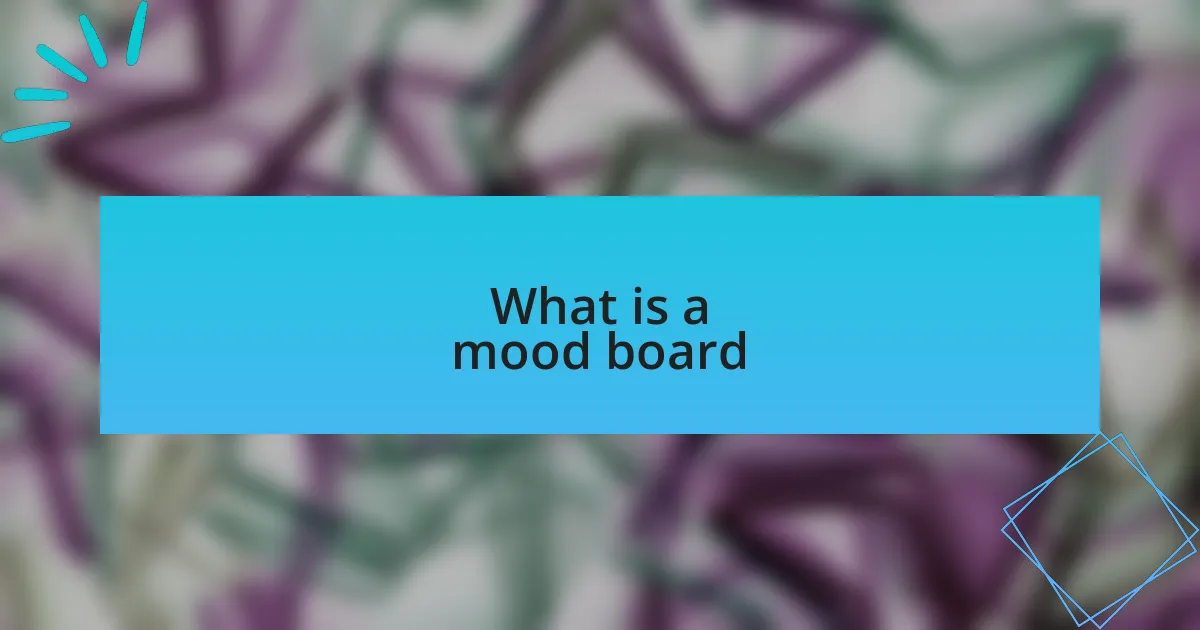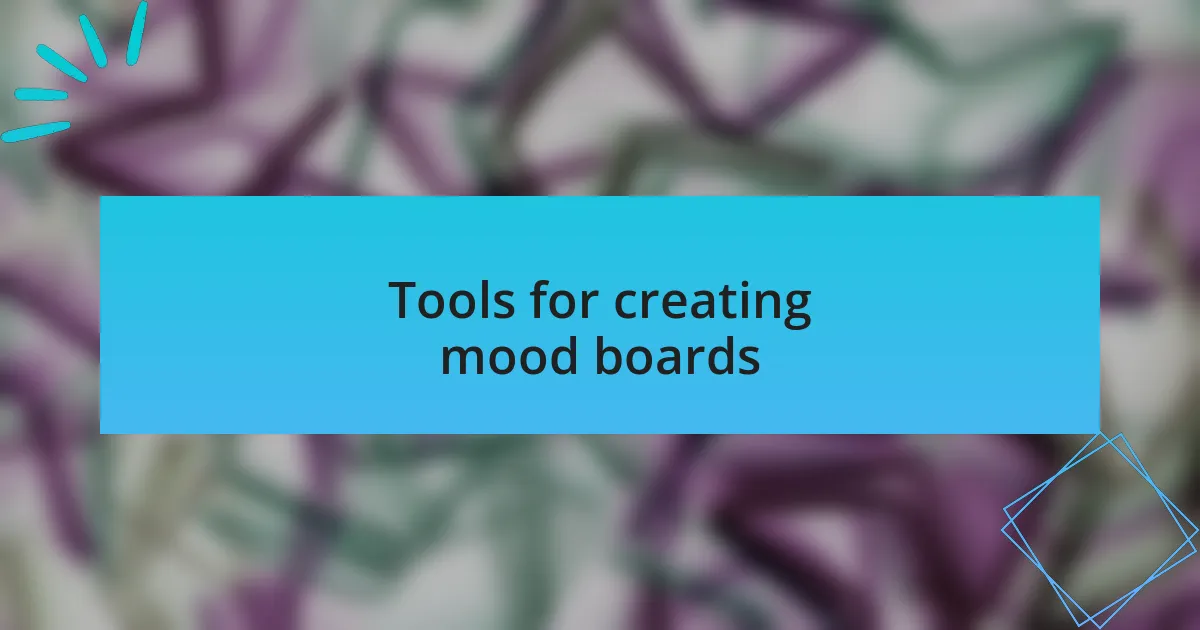Key takeaways:
- A mood board is a visual collage that conveys the essence and emotional direction of a project, aiding both designers and clients in clarifying their vision.
- Tools for creating mood boards include user-friendly software like Adobe Spark and Canva, as well as platforms like Pinterest for inspiration; physical boards made from tangible materials can also enhance the creative process.
- Successful mood boards effectively communicate a project’s thematic elements and emotional connections, influencing the overall design direction and cohesiveness.

What is a mood board
A mood board is essentially a visual collage that captures the essence of a project. It combines colors, textures, images, and typography that evoke a specific feeling or concept. When I first started using mood boards, I was amazed at how a simple arrangement of visuals could clarify my design direction and convey my vision to clients.
Creating a mood board isn’t just about aesthetics; it’s an emotional journey. I remember the excitement I felt while piecing together swatches and images that resonated with my ideas. It made me ask myself, “What emotions am I trying to evoke?” This process is crucial because it allows the designer—and the client—to explore and articulate the project’s essence more deeply.
Mood boards serve as a bridge between inspiration and execution. They provide a tangible reference point that can guide decisions throughout the design process. It’s fascinating how just a collection of images and words can create a shared understanding, aligning everyone involved and making the final design feel more cohesive and informed.

Tools for creating mood boards
When it comes to tools for creating mood boards, I often turn to software like Adobe Spark or Canva. These platforms offer user-friendly interfaces that allow you to drag and drop images, adjust color palettes, and experiment with typography seamlessly. The first time I used Canva, I felt a rush of creativity; it allowed me to build out my vision without the frustration of complicated software.
Another powerful tool that has become indispensable for me is Pinterest. It’s not just a repository of images; it’s a treasure trove of inspiration. I vividly recall a project where I created a secret board, collecting pins that perfectly encapsulated my ideas. Browsing through those visuals not only sparked my imagination but also helped clarify my thoughts, making me ponder, “Is this the vibe I want to convey?”
For those who prefer a more tactile approach, physical mood boards made from magazine clippings, fabric swatches, or paint samples can be incredibly effective. I remember spending an afternoon at my kitchen table, surrounded by glue sticks and scissors, crafting a mood board that was both a sensory experience and a creative outlet. It was in that hands-on process that I felt the true power of a mood board: the ability to connect emotionally with the materials and create something uniquely personal.

Examples of successful mood boards
When I think of successful mood boards, one project immediately comes to mind: a branding board I created for a local bakery. By combining warm colors, textures of baked goods, and playful typography, I encapsulated the friendly, cozy atmosphere of the shop. It was rewarding to witness how that board guided the entire design process, helping to communicate a clear and cohesive vision from the outset.
Another example that left a lasting impression on me involved a fashion design project. I curated a mood board filled with bold colors, striking patterns, and fabric samples. As I stood back to evaluate it, I noticed how the visuals sparked emotional connections—such as excitement and confidence—reflecting the brand’s identity. This process made me realize that mood boards not only convey aesthetics but also evoke feelings, which is what makes them truly powerful.
I once saw an interior design mood board that was a game-changer for me. It featured serene blues, natural textures, and playful art pieces that instantly transported me into a peaceful retreat. Creating a similar board for a home renovation project really helped me focus on achieving the desired serenity I wanted in my space, prompting me to ask myself, “How can I infuse this calming energy into my everyday life?” It’s amazing how the right visuals can resonate so deeply and guide your decisions effectively.